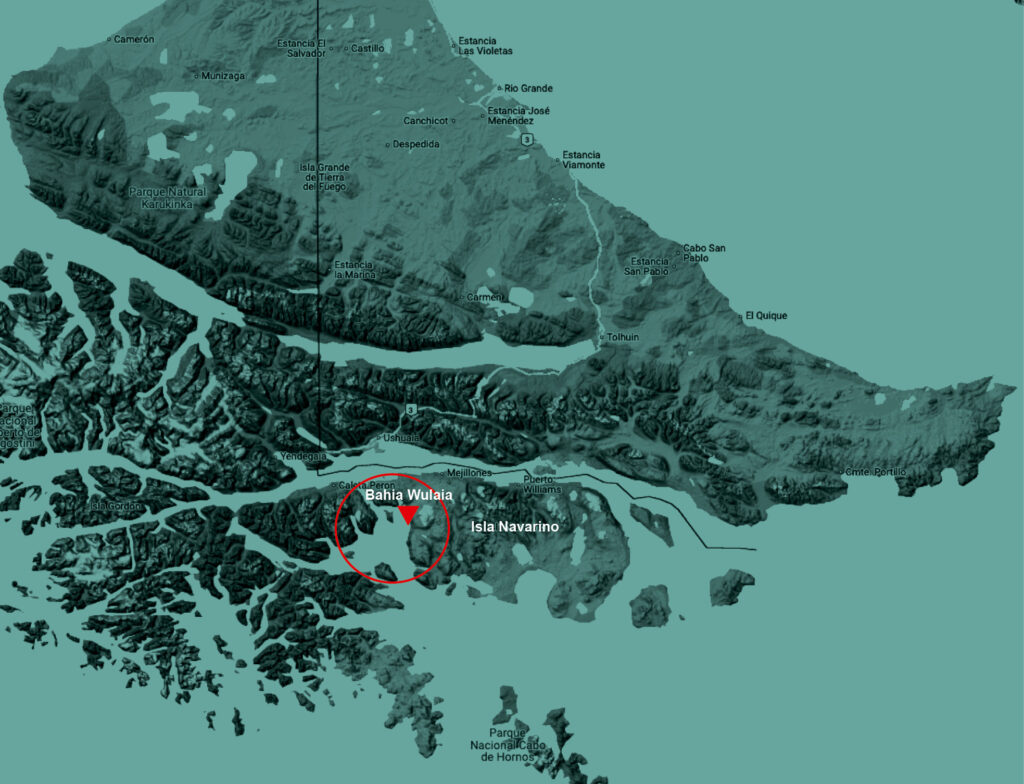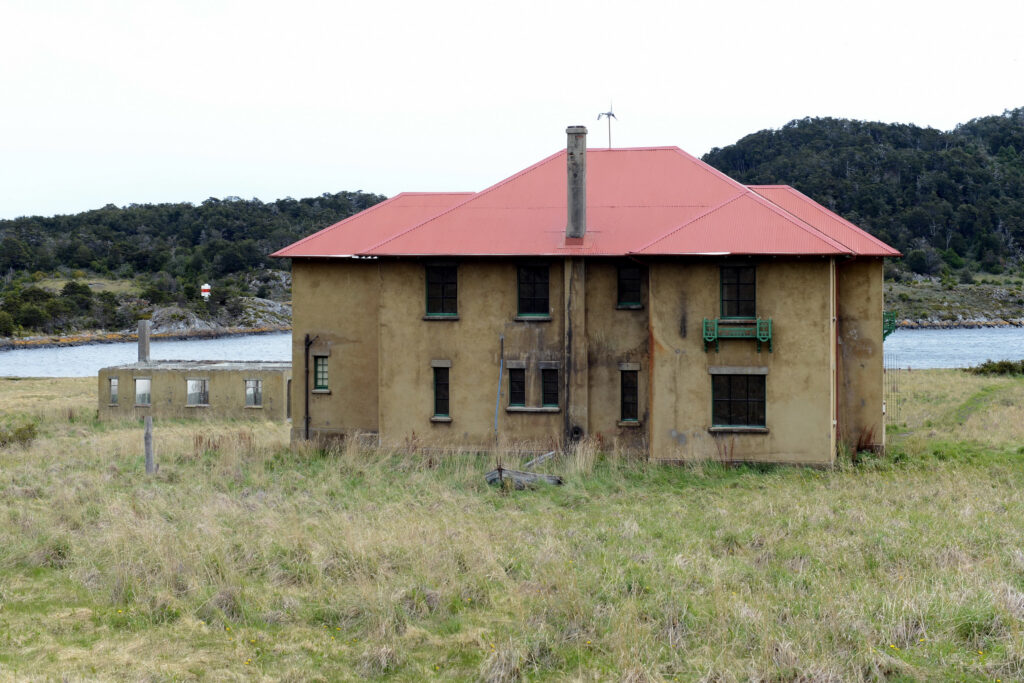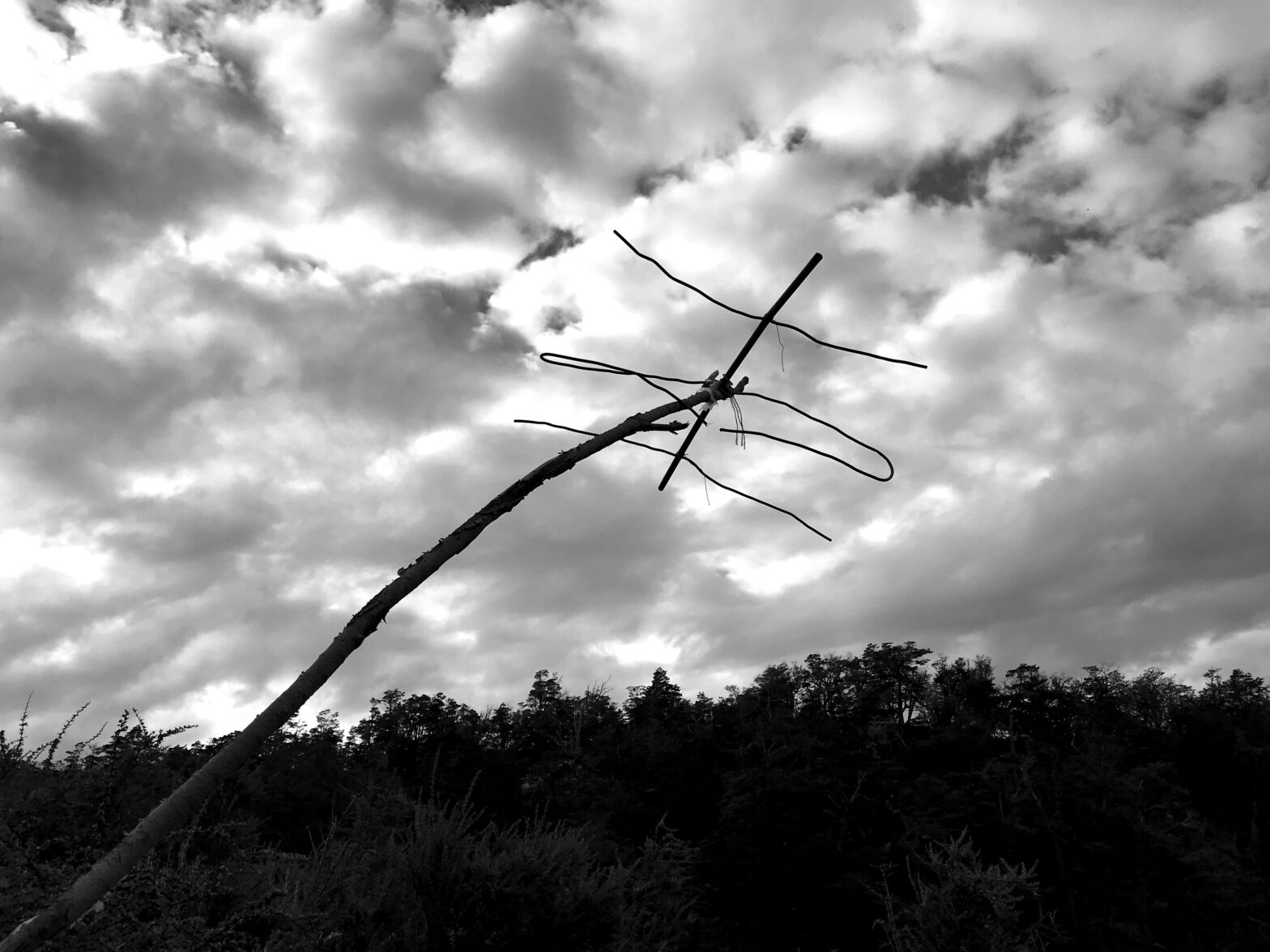> projects / 2025 / radiales / Preliminary Visit / Emerging Archive / Historic Background / Forum / Documentation / Participants
Radiales is the name of the new project by Terra Ignota, extending the geological research “Intercultural Contact Zone” conducted between 2017 and 2024 in Yendegaia National Park. This project continues the transdisciplinary study as a way to understand this territory and its different forms of interpretation.
The study area focuses on the geological continuity of Yendegaia Bay, specifically the Murray Channel. This maritime passage is located latitudinally between Hoste Island and Navarino Island, and longitudinally between the Beagle Channel and Nassau Bay at Cape Horn, at coordinates 55°00’00.0″S 68°19’49.7″W. As a base camp, we will use the former navy radio station located in Bahía Wulaia.

The central idea of Radiales is to rethink the function and scope of the contemporary museum beyond revitalizing a former radio station as a heritage space. We want to reflect on the mechanisms that act as a bridge for the museum to connect meaningfully with the community it serves, considering the inclusion of the otherness that cohabits it. It’s about understanding this space, which has functioned as a place of repeated and natural convergence since prehistoric times, emitting signals toward the future, inscribed in its oceans, rocks, and wind.

The main objective of this exploration is to establish a framework, research, and experimentation with clear questions and objectives, understanding the potential and limitations for further explorations. The fieldwork will be focused on creating a curatorial line, forming work teams, and developing production methods that align with the geography, climate, and the various social actors already present. It’s about finding the right questions and identifying the appropriate methods, tools, and specialists to address them effectively.
Museums as Transmission Technologies
An antenna, both in the natural world and the electromagnetic realm, can be defined as a sensory organ that acts as a bridge between two realities. In insects and other animals, antennas are sensory structures that capture chemical and physical signals from the environment, translating them into vital information for survival. In the field of science and technology, electromagnetic antennas play a similar role, capturing radio waves and other types of electromagnetic radiation, converting them into data that enable communication and the transfer of significant information.
The museum-antenna adopts the fundamental mechanism of a museum: taking something from the present to construct a past. The difference is that the museum-antenna views heritage as a continuous and collective construction that develops, transmits, and evolves over time. Its goal is to reflect the richness and complexity that make up heritage in a living, constantly mutating process.
By basing its practice on invisible energies, the museum-antenna transcends the traditional idea of a museum as a preserver of the past, moving instead between preservation and transmission. The conservation strategy of this museum is to transmit, to externalize and liberate heritage to the potential multitude of its resonance.
We aim to perceive the Murray Channel as a living archive, an in-situ museum piece understood through the constant aggregation of abstractions and subjectivities. The museum-antenna will serve as the transceiver of experiences, viewpoints, and interpretations inscribed in this archive, stored in the form of matter, energy, and information that transcends human comprehension and temporal scales.
In Radiales, we start from the premise that we can only preserve what is transformed, and that we only truly possess what is shared. The museum-antenna intensifies this idea by using radio signals to create a listening network and an acoustic community that transcends the physical barriers of the island.
Taces and encounters
Open forum – February 5 and 6, 18:00 – 20:00
@ Museo Territorial Yagán Usi – Martín González Calderón
Aragay esquina Gusinde, Puerto Williams, Chile
organized by Museo Martín González + Terra Ignota

supported by:

